Meet the Mysurean behind conservation of priceless Murals & heritage monuments
By Shyam Sundar Vattam
Painting has been one of the means of expression from time immemorial. India, with a history of over 5,000 years, has been known for having murals of hundreds of years old. Restoring them is a biggest challenge. S. Subbaraman, retired Superintending Archaeological Chemist, Archaeological Survey of India (ASI), has the credit of restoring murals from Ajanta Caves to Halebid temple and Bamiyan Buddha Statues in Afghanistan. A resident of Mysuru, the nonagenarian shared his experiences with ‘Star of Mysore’ in a freewheeling chat. —Ed
Star of Mysore (SOM): From Food and Drugs Analyst, how did your mind attract towards Archaeological Survey of India (ASI) as Chemical Assistant. Is it out of passion or compulsion?
Subbaraman: I did not join ASI out of any passion for Archaeology. To be frank, I did not even know much about Archaeology at that point of time. It was the perceived higher importance attached to serving in the Central Government (rather than in a State Government), besides the lure of a higher pay. In the King Institute, Madras, I was getting a salary of Rs. 145. In my new job in ASI, it was the ‘princely‘ sum of Rs. 220 (160 Basic + 60 D.A.). For lower middle class people like us, the luxury of choosing our careers was not there. We just needed a job to make a living and we went wherever chance led us.
However, after joining ASI and working in such great monuments like Ajanta, I started developing an admiration and love for these monuments and started relishing my work more and more, besides realising my good fortune in being in the important field of preserving our priceless heritage.
After working in ASI for a few years, I came to understand one thing. Working on such objects of immeasurable value, such as the Ajanta paintings for instance, requires not only technical knowledge of the chemicals, materials, procedures and manual skill but a certain amount of artistic sensibility and a feel for these great works of art. Then only a conservator can be really successful. Perhaps, I had these qualities to some extent, without my being aware that I had them !
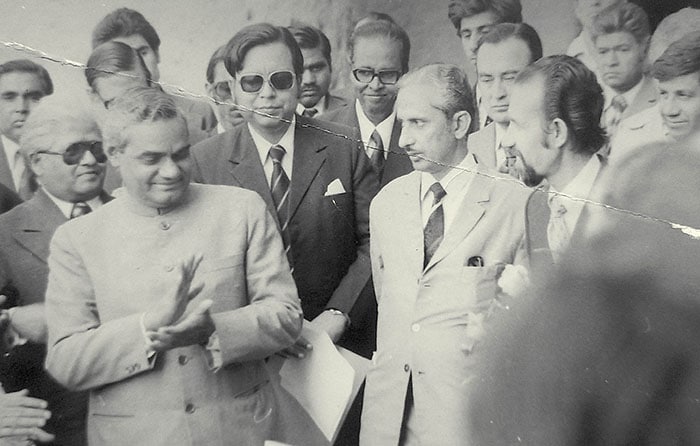
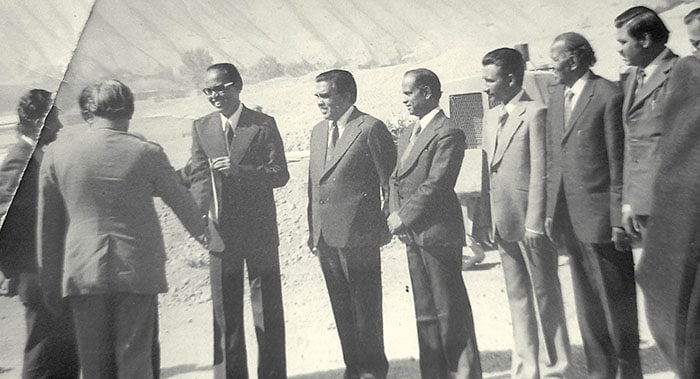
SOM: Which was your first assignment after joining as Chemical Assistant in ASI?
Subbaraman: My first assignment was to work on 13th century mural paintings in the Jain cave in a hamlet called Thirumalai, 2-km distance from Vadamadi-mangalam, in the North Arcot district of Tamil Nadu. Vadamadimangalam is a Railway Station on the Katpadi – Thiruvannamalai route.
My senior, K.T.M. Hegde, who was already there when I arrived on May 1, 1954, trained me in the work, which consisted of cleaning the paint surface with suitable organic solvents in order to remove dust, dirt etc., and bring back the colours to their original brightness, as much as possible and finally to apply a coat of preservative (1% solution of Polyvinyl Acetate in Toluene).
The paintings in this cave consisted only of designs and did not have any figures, which would have been there if any particular theme was depicted. So it provided just training ground but did not prove very exciting. For that, I had to wait for my next posting, namely Ajanta.
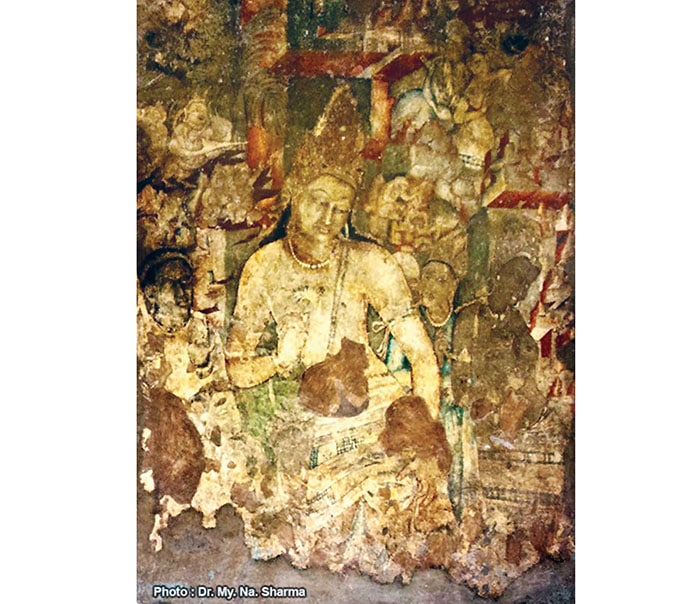
SOM: You mentioned about following a new technology for restoration of mural, what is that technology?
Subbaraman: When there are perennial problems like constant moisture in the wall, it becomes impossible to preserve mural paintings in situ. It then becomes necessary to transfer them from the wall and remount them on a different support. This work of transfer has been in practice in Italy for a long time and they have both experience and expertise in the work.
They have two techniques for this: 1. Strappo and 2. Stacco.
In all methods of transfer, the first step is to apply a facing of cloth on the paint surface in order to ensure its safety during the transfer. In the Strappo technique, the cloth facing is applied with the help of glue as adhesive. While drying, the glue undergoes shrinkage and this has the effect of pulling the paint surface away from the wall, which facilitates the later separation. After the facing has completely dried, the separation of the paint layer from the wall is effected by simply pulling away the faced paint layer. After the separated painting is remounted on a fresh support (such as fibre class), the last step is to remove the facing with the help of hot water. This is possible in Italy because the paintings there are all in true Fresco technique, where the paint layer is insoluble in water.
In the Stacco technique, a portion of the ground (namely, lime plaster) is also removed from the wall, along with the paint layer. For adhesive for applying the cloth facing, molasses is added to the glue to reduce the shrinkage, so as to keep the paint layer and plaster bound together during transfer. Other procedures are the same as in Strappo technique.
In all the transfer techniques described above, the transfer of the painting is from the wall and, therefore, there is no need to worry about the safety of the support from which the painting is being transferred. The use of chisel and hammer, when necessary, is therefore quite safe. In our work in Brihadeeshwara temple in Thanjavur, however, one layer of old mural painting was to be separated from another layer. As can be imagined, this is much more difficult and much greater skill and caution was required for the work.
Since the superimposed Nayaka layer was rather fragile, I ruled out the Strappo technique and decided to adopt the Stracco technique (in which a part of the lime plaster is also removed). Secondly, the use of glue as adhesive for facing cloth had also to be ruled out because you cannot use hot water for removing the facing at the end, the Nayaka paintings being in water-soluble Tempera. I decided to use a 20% solution of Polyvinyl Acetate as adhesive for facing cloth. This is a strong adhesive that can be easily removed with the help of an organic solvent like Toluene.
I also used rubber-tipped chisels and a wooden mallet (instead of hammer to minimise pressure) so as to avoid causing the slightest damage to the Chola layer during the separation. I thus used already known techniques, suitably modified to fit our conditions and did not invent any new technique. It was the skill in execution and abundant caution exercised that were more important.
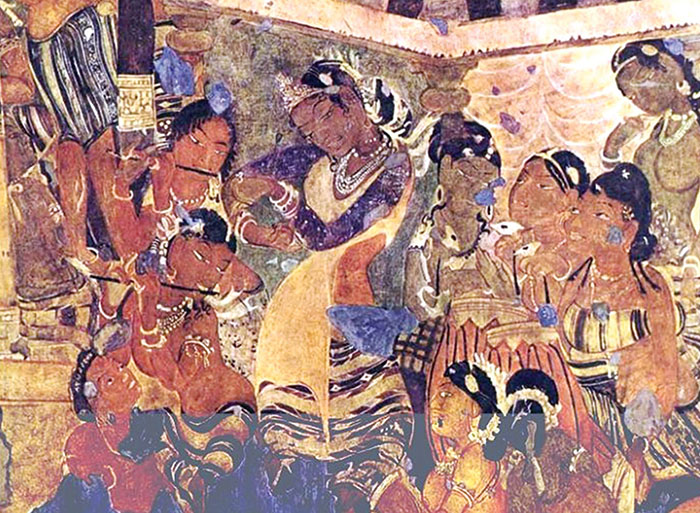
SOM: Explain how the restoration work begins?
Subbaraman: A mural painting is basically a layered structure, consisting of: 1) Support (which is stone or brick wall); 2) Ground (mud plaster in early examples like in Ajanta but lime plaster in murals from 7th century onwards); 3) Paint layer.
Old mural paintings in our country are mostly in the Tempera technique, in which the pigments are ground in an organic binding medium such as gum or glue and the painting is done on a dry ground.
In the West, what is called the True Fresco technique has been practiced from very early times. In this, the pigments are ground only in water and the painting is done on the lime plaster when it is still wet. During the drying of the painted plaster, the lime reacts with atmospheric carbon dioxide and is gradually turned to lime stone, integrating the paint layer firmly with the plaster and also rendering the paint layer to be insoluble in water.
In the conservation of mural paintings, the aim is to ensure the sound condition of all the three layers and their mutual adhesion. The first step is to fix back all loose, hanging or bulging portions back to the wall with help of lime-casein adhesive. Loose edges are all filleted, using lime plaster, suitably tinted so as to merge with the surroundings.
The next step is cleaning, in order to remove all accretions on the paint layer such as dust, ingrained dirt, oily or sooty deposits, bird or bat droppings etc., that we find in old monuments, in an attempt to bring back the colours to their original brightness as much as possible. We cannot use aqueous solutions for the cleaning because the medium (gum or glue) in our Indian paintings is water-soluble. We have to use organic solvents after first experimenting in a small corner to find an effective as well as safe solvent. In practice, mixtures of two or more solvents are sometimes found to be more effective than a single solvent. Cotton swabs dipped in the solvent are gently rolled over the paint surface to remove the accretions.
The last step is the application of a preservative coat for protecting the paint surface from the atmosphere. We normally use a 1% solution of Polyvinyl acetate (PVA ) in Toluene. It leaves a colourless, perfectly transparent coating on the paint surface and remains stable for at least 20 years. After that, the coating can be easily removed with the help of Toluene and a fresh coating applied.
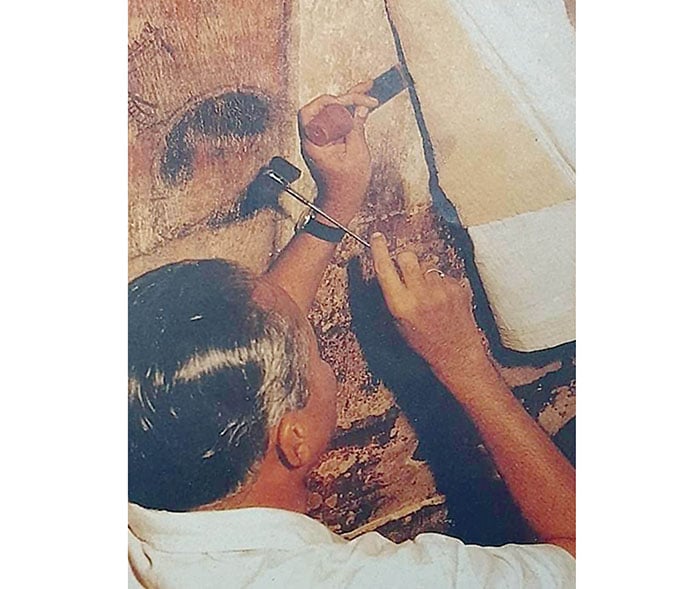
SOM: How did you restore Ajanta Cave paintings and other paintings in Lepakshi Temple?
Subbaraman: The first mural painting conservation project in India was undertaken by the Nizam of Hyderabad for conserving and restoring Ajanta paintings (Ajanta and Ellora lay in his dominions then) by inviting two Italian restorers, Cecconi and Orsini, who worked for two seasons of 4 months each in 1920 and 21. They did a very good job of consolidating the fragile paintings, strengthening them and cleaning them to the maximum extent possible. But one thing they did towards the end of their work happened to cause problems for future conservators like us. They applied a 5% solution of Shellac as a preservative coat on the paint surface. While the coating immediately brightened the paint surface, the Shellac gradually underwent oxidation due to reaction with the atmosphere and turned yellow and even brownish, distorting the appearance of the original colours.
The task before us of the ASI, when we started our work in the fifties, was to remove this Shellac coating without harming the paint surface in the least. This was delicate work requiring much skill and patience, especially in view of the tremendous value of these paintings. A number of organic solvents were experimented with before arriving at an optimum solvent/ solvent mixture.
Major portions of the paintings have survived in Caves 1, 2, 6, 9, 10, 16 and 17. In 1955, we started work in Caves 16 and 17 and successfully removed the Shellac coating and brought back the paint surface to its original brightness to the maximum extent possible.
Lepakshi: The Veerabhadraswamy temple here, built in late Vijayanagar period (around 1520 ), is noted both for its beautiful sculptures and paintings. When I came here in June 1958, the paintings on the ceiling of the outer Mantapa had already been conserved by my predecessors. I had to take up work in the interior. Here, the problem was of soot emanating from oil lamps and camphor arathis etc. The ceiling, about 30 feet long and 15 feet wide, had been covered with thick deposits of soot, completely hiding the paintings underneath. Only from faint outlines visible could we make out that there were paintings below the soot deposit. My task was to remove the soot and restore the paintings to their original appearance. This again was a challenging task, because the paint surface might have interacted with the oily and sooty deposits and become fragile. The soot had to be removed without harming the paint surface in the least.
The ceiling was about 15 feet high and bamboo scaffolding of suitable height was constructed to work on. A mildly alkaline organic solvent, Triethanolamine, was selected for the cleaning. The solvent (which has a high boiling point) was applied on the paint surface with a soft brush and allowed to react for about an hour. After that, the partly dissolved soot was removed by gently rolling over the surface cotton swabs dipped in petroleum spirit. After the area had dried, if some soot still remained, the process was repeated. A maximum of three such cleanings was required to remove the soot completely. The result was spectacular. A 16 feet long Veerabhadra figure, with crown and other ornamentation and five hands on each side, each hand holding a different weapon, emerged! It was as if Veerabhadra had hidden behind a dark curtain and he now came out by lifting the curtain!
The work was all the more difficult because it had to be done on the ceiling, the conservator having to keep looking upwards all the time, subjecting the neck muscles to great strain. (There were instances of workers doing similar work developing Cervical Spondilitis but I escaped unscathed!)
The work attracted lot of public attention. Kallur Subba Rao, a former Deputy Speaker of the Andhra Assembly, who belonged to that district, specially came over to Lepakshi and was extremely pleased to see the newly exposed, huge and magnificent Veerabhadra figure!
It may be mentioned in passing that Lepakshi also has the largest stone Nandi (28 feet long and 14 feet high) in the country (bigger than the one on Chamundi Hill and the one in Brihadeeshwara temple, Thanjavur).
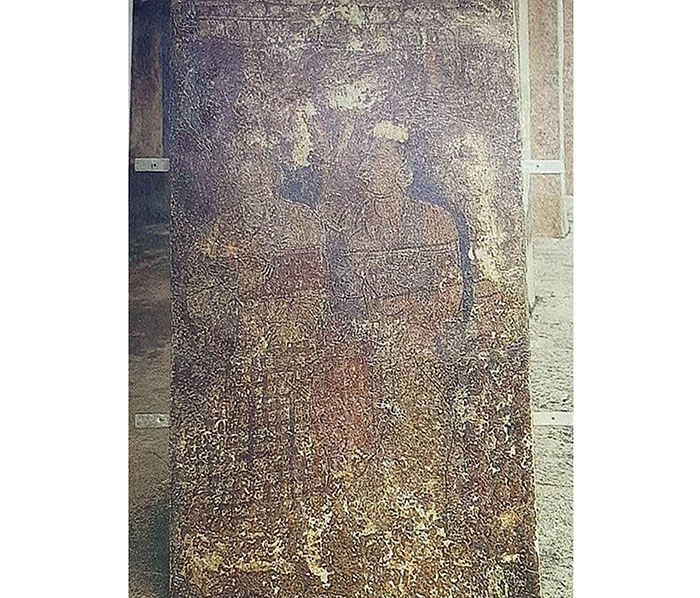
SOM: Explain about higher training in art restoration in Rome. Did you see the difference in restoration process between India and abroad?
Subbaraman: The Italians have a long experience of conserving and restoring mural paintings since they have a profusion of mural painting heritage, spread all over Italy. Therefore, they have lot of expertise too. Besides, I had a lot of fascination for Roman History from my school days, after reading about Julius Caesar and other heroes and Rome, being the epicenter of the Roman empire and having wonderful monuments of various epochs with sculptures and paintings galore, the chance to stay in Rome for 10 months (December 1960 to October 1961) and study their techniques was a unique opportunity for me to learn and add to my own knowledge and expertise in the field in which I was working.
I studied in the Central Institute of Art Restoration in Rome. There were classes as well as field work. But the one essential difference is that their paintings are all True Frescos and ours are Temperas. I have explained the difference between the two above. Naturally, therefore, the methods of treating them also should differ. The latest techniques that I learnt in Rome had to be suitably modified if they had to be used in our conditions.
But the exposure to the wider world of art restoration in a country like Italy was a valuable experience that stood me in good stead throughout my career.
I also utilized this opportunity of being in Europe to visit Museum Conservation Laboratories in other countries like Switzerland, Germany, Belgium, Netherlands, France and England (during my Institute’s summer break) to study latest conservation techniques.
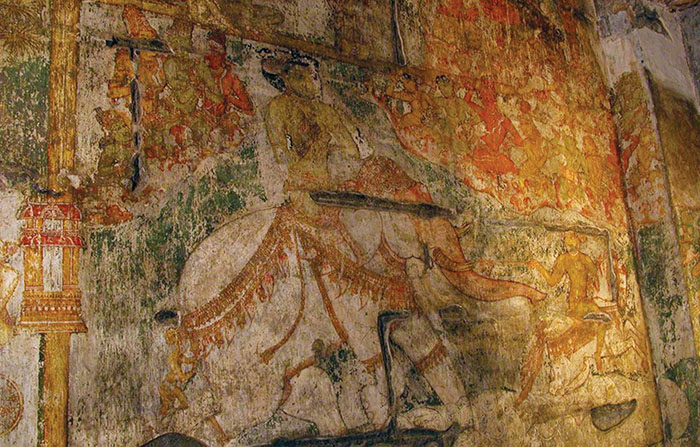
SOM: What restoration works did you take up in Belur and Halebid temples?
Subbaraman: Even stone, one of the most durable of building materials, is not immune to factors causing deterioration. Stone monuments therefore are affected by various factors which may be classified broadly as physical, chemical and biological.
The growth of micro-organisms like mosses, lichens and algae etc., is one of the main biological factors. Their growth occurs when moisture is present or even when the atmospheric Relative Humidity is about 75% or more.
The work in the Hoysala monuments of Belur and Halebid (which I did in 1964-65) consisted in cleaning for the removal of darkish growth of moss all over, which was disfiguring the intricately carved sculptures in the exterior. Since the stone here is quite soft (steatite or soap stone), extra care had to be taken in the cleaning so as not to damage the stone surface. Soft brushes had to be used to avoid abrasion. At the end of the cleaning, the stone surface was protected with a coating of 2% solution of Polymethylmethacrilate.
SOM: After restoration, for how many years the murals survive?
Subbaraman: After the conservation/ restoration process is over, the survival of the murals in a good condition depends on maintenance. Moisture is the single biggest factor for their deterioration. Therefore, care should be taken to completely stop the ingress of rain water through repairs to the building and constant maintenance. If they are in a tourist centre like Ajanta, the number of visitors at any one time has to be restricted, so as to avoid too much of carbon dioxide breathed out by the people that will affect the paintings.
In our experience in monuments, we have found that after treatment, the paintings are in good condition over an indefinite period, the only attention required being the removal of the old preservative coat and applying a fresh coat, after about 20 years.
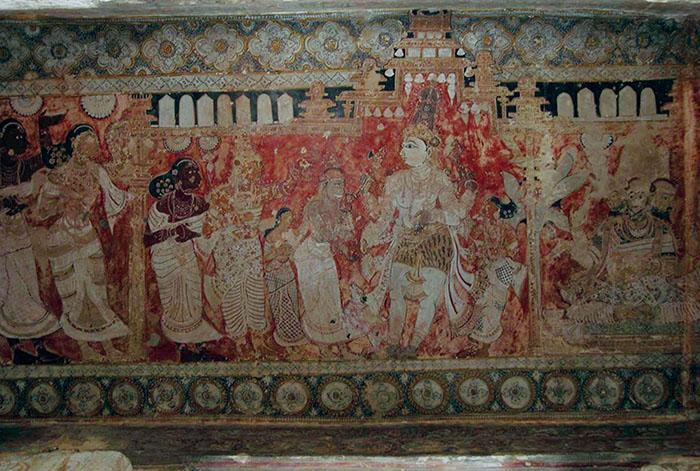
SOM: How those paintings of 500 to 600 years old survived despite vagaries of nature. What kind of colours were they using?
Subbaraman: One of the main reasons why these mural paintings have survived for hundreds of years is that the pigments used are all of mineral origin and more resistant to chemical change. If pigments of organic origin, say from vegetables or flowers, had been used, they would have faded long since. Stability of temperature and relative humidity inside the buildings is another factor that helps.
SOM: We are eager to know about your experience as a team leader to Bamiyan, Afghanistan, for the conservation and restoration of the two gigantic Buddha Statues. How did you do it?
Subbaraman: It fell to my lot to lead the team to Bamiyan, Afghanistan in June 1977 when we completed the 9-year project of conserving and restoring the two gigantic Buddha Statues. The work on the small Buddha had been completed earlier and work on the 183-feet-tall big Buddha was in progress, which we completed in all respects, working from June to October 1977.
We had erected 200 feet high steel scaffolding, going up to the roof of the niche containing the Statue, for our work. You could also reach the head of the Buddha Statue by climbing a hillock from behind. If you stood on the head of the Statue, it looked like you were standing in a large room. You can also imagine the size of the Statue when I say that, when I climbed down the scaffolding 30 feet from the head, I would have reached just the shoulder!
The work consisted in consolidating the stone surface of the Statue and also conserving the mural paintings, depicting various Buddhist themes, on the walls and ceiling of the niche. The paintings belonged to the 3rd/4th centuries C.E., contemporaneous with Ajanta paintings. It was a most exciting and challenging job. I had an enthusiastic team with me who took up the challenge with zest and completed the work in expected time. We would start at 8.30 in the morning and finish by 4.30 pm, with a brief lunch break. The team members hurried to the camp at 4.30 for their tea and a game of volley ball. (I was 47 years old at that time but being an experienced player, I was the star spiker in the team. Once we playfully had a match between the over 40 and below 40 players. We, the over 40, won!)
I was told that when the project began in 1969, the local people were hostile to it, their religion being opposed to idol worship. But as the work progressed and more and more tourists began coming in with more hotels being opened and the economy of the village improving considerably, people became friendly. We found the local officials most cooperative. (Afghanistan has always been friendly to India. Even then, India had many development projects going in that country.)
Our Ambassador at that time S.K. Singh (who later became India’s Foreign Secretary) was very helpful to us. Whenever the team members visited Kabul, Embassy staff members used to invite us for dinner. It was all a very pleasant experience for us.
The visit of our then External Affairs Minister, Atal Behari Vajpayee, for formally handing over the monuments to the Afghan Government after the completion of our work, is memorable. The opening words of his speech are still ringing in my ears. He said: “Bamiyanaakar, Hamaara Afghanistan Yaatra Theerthyathra Bangaya.“
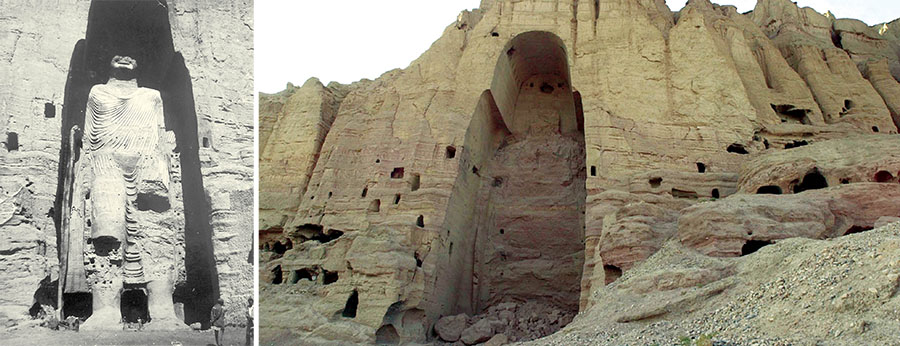
SOM: What was your initial response when you heard that the Bamiyan Buddha Statues were destroyed by Talibans?
Subbaraman: I was in the USA in 2001, visiting my son and daughter in California, when I heard the news of the destruction of the Statues by the Taliban. Such acts of barbarous vandalism would be saddening to any sensitive person but imagine the feelings of one like me, personally involved in their conservation! I was heart-broken.
SOM: How did you conserve Angkor Wat in Cambodia?
Subbaraman: I was only involved in the preparation of the project report for the conservation of Angkor Wat in 1982. The opportunity for studying this amazing monument over a period of four months and becoming acquainted with almost every inch of it was a God-sent opportunity. But I could not take part in the actual conservation work. The work was started by ASI only in 1986 and went on for 8 seasons. In 1986, I was nearing retirement and could not take part in it. However, earlier in 1986, I accompanied the Director General of ASI to Angkor Wat, for planning the first year’s work of the conservation project.
SOM: In India, how many murals have been destroyed for non-maintenance?
Subbaraman: More than 5,000 monuments have been declared as of national importance and protected by ASI. Many other monuments have been protected by the various State Departments of Archaeology. Those in Governmental control are being looked after well by the different Departments.
But there are still a very large number of heritage structures outside Government control. Voluntary organisations like the Indian National Trust for Cultural Heritage (INTACH) are trying their best to look after them by undertaking conservation projects with the help of donations or grants.
Sadly there was a case of some valuable mural paintings being lost due to a wrong procedure by ASI itself. The Bagh Caves in Madhya Pradesh had beautiful murals of the 4th /5th century C.E. The caves showed signs of sinking due to pressure from the rocks above and to prevent this, ASI decided to blast off part of the overlying rocks to reduce the weight and pressure from above. This was a good move by itself. But what they should have done immediately thereafter but failed to do was to seal off all fissures and cracks in the remaining rock surface. Rain water started seeping in freely from these cracks, spoiling the paintings (on mud plaster) on the walls of the caves. We salvaged a large part of them from transferring them from the walls.
There are mural paintings of the Nayaka period (16th-17th centuries) in a large number of temples in Tamil Nadu as well as in Kerala temples of about the same period. Most of them in Tamil Nadu are in the control of the Hindu Religious and Charitable Endowments (H.R. & C.E.) Department, who are not aware of the importance of preserving these properly. In some temples, they have simply white-washed in the name of temple renovation. This lack of awareness and negligence has resulted in the loss of many paintings.
In Karnataka, there are fewer mural paintings. One of them is in the Virupaksha temple at Hampi which is under the State Department of Archaeology and has been preserved. On the paintings at Sibi in Tumakuru district, the State Department is reported to have entrusted the conservation work to some wrong people and so some damage has been done. The Nippani Palace of Belagavi district has a large area of murals. Work is yet to be done there. There are paintings in the temples inside the Mysore Palace too. INTACH people have been contacted about their preservation.
SOM: Do you think mural restoration is getting adequate recognition?Subbaraman: My work has received sufficient attention among my peers if not among the general public. That is only understandable because not every one among the public is interested in monuments or mural paintings. One encouraging thing is that there seems to be greater awareness now among the authorities concerned to take proper care of these paintings, such an important part of our heritage and they are contacting agencies who can do the conservation work. However, in view of the huge amount of work still to be done and the slenderness of the available manpower, there is need to train more and more people in the work.

SOM: Can mural restoration attract youths?
Subbaraman: Some young people with an art background are taking up the work of art conservation. There should be enough encouragement and financial rewards for attracting more and more young people to this field.
SOM: Are you ready to help in case the State Government requests your services for the restoration of murals in Karnataka?
Subbaraman: In view of my age, I shall not be able to take active part in any future conservation project but my suggestions and advice will always be available.
SOM: In your service spanning over three decades, which was your joyous moment and the saddest?
Subbaraman: My most joyous moment during my 33 years of service in ASI was the successful execution of my work in the Brihadeeshwara temple, Thanjavur. (A close second was the treatment of the Panduranga Vithala idol at Phandarpur in 1988, which also won wide acclaim). The saddest moment, of course, was when I heard the news of the destruction of the Bamiyan Buddhas by the Taliban in 2001.
Messiah of Murals
Born on December 21, 1929, S. Subbaraman completed M.A. Degree (first class) from Loyola College, Madras (now Chennai) in 1951. [The post-graduate degree awarded by the Madras University even in Science subjects those days was M.A. The M.Sc. degree could be obtained only by doing research].
From 1951 to 1954, he worked as Junior Analyst in the Food and Drugs Analysis section of King Institute, Madras.
On May 1, 1954, he joined the Archaeological Survey of India (ASI) as Chemical Assistant and his first posting was at Thirumalai in the North Arcot District of Tamil Nadu to work on the preservation of 13th century mural paintings in the Jain cave there.
From February 1955 to June 1958, he worked at Ajanta, engaged in the conservation of the world-famous paintings there.
June 1958 to December 1960, he worked in the Veerabhadraswamy temple, Lepakshi; conserved the Vijayanagar period mural paintings in the temple.
December 1960 to November 1961, Subbaraman received higher training in Art Restoration in the Central Institute of Art Restoration, Rome, under an Italian Government Scholarship.
May 1966 to May 1975, he was on deputation to the Indian Museum, Calcutta (now Kolkata); Set up the Conservation Laboratory of the Museum and was responsible for the conservation of a large number of music objects of different kinds.
May 1975 to December 1987, he returned to his parent department, ASI and took charge at Hyderabad as the Head of the Southern Region of the Chemistry Branch of ASI — first with the designation of Deputy Superintending Archaeological Chemist (class I) and later promoted as Superintending Archaeological Chemist (senior class I).
As Head of the Southern Region, he held responsibility for the conservation of monuments in all the four Southern States, besides Maharashtra and Gujarat.
In 1976, he started work on the mural paintings of Brihadeeshwara temple, Thanjavur and it continued up to the 80s. The Australian Broadcasting Corporation, on seeing the news about this work in The Hindu, sent a 4-member team to Thanjavur to film the entire operation, in 1986. It was later aired on TV as part of their programme ‘Beyond 2000’ highlighting the latest achievements in various fields.
During 1977 (June to October), he headed a 15-member team to Bamiyan, Afghanistan, for the conservation and restoration of the two gigantic Buddha Statues.
In 1982, he was among the 9-member ASI team to Cambodia to study Angkor Wat in detail and prepare a project report for its conservation.
He retired from ASI on December 31, 1987.
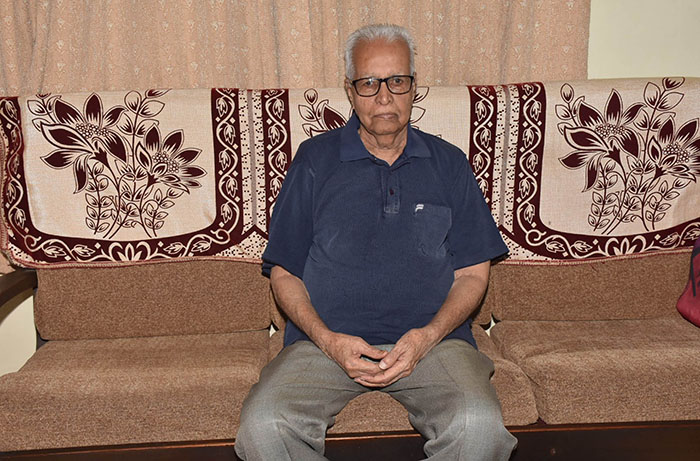
Post-retirement work
In 1988, he treated the idol of Sri Panduranga Vithala at Phandarpur, Maharashtra, since the stone surface of the image was being eroded due to constant abhishekas with milk, curd etc., every day.
1989 to 1991: Consultation work at the invitation of temples and other institutions.
1992: Project Officer in the Vrindaban Research Institute, Vrindaban, Mathura (UP) for developing the laboratory for the conservation of palm leaf and paper manuscripts.
1993 to 2006: Director of INTACH Chitrakala Parishath Art Conservation Centre (ICKPAC), Bangalore. A large number of art objects of different kinds like traditional paintings of the Mysore and Thanjavur Schools, Oil paintings, Water colours, Drawings, Manuscripts, Old bronzes, painted wooden objects, ivories etc., were conserved and restored by the Centre for Government as well as private institutions, besides individual owners.
Carried out mural painting conservation projects in Tamil Nadu: i) Srirangam temple (where the paintings were completely covered with soot due to a fire breakout that had taken place earlier); ii) Thanjavur Palace on the occasion of the World Tamil Conference in 1994; iii) Ramalinga Vilasam Palace, Ramanathapuram.
He also worked for the National Mission for Manuscripts (NMM), Government of India, in visiting old manuscript collections in temples, mutts etc. and training the staff in preventive conservation of the palm leaf and paper manuscripts.
He was Karnataka State Coordinator for the National Survey of Manuscripts, conducted by NMM in 2005. They could identify and record about 2 lakh old manuscripts in the State.
In 2006, he took voluntary retirement from ICKPAC and shifted to Mysore (Mysuru) where he currently resides with his family on Sahukar Channaiah Road, Gangothri II Stage.



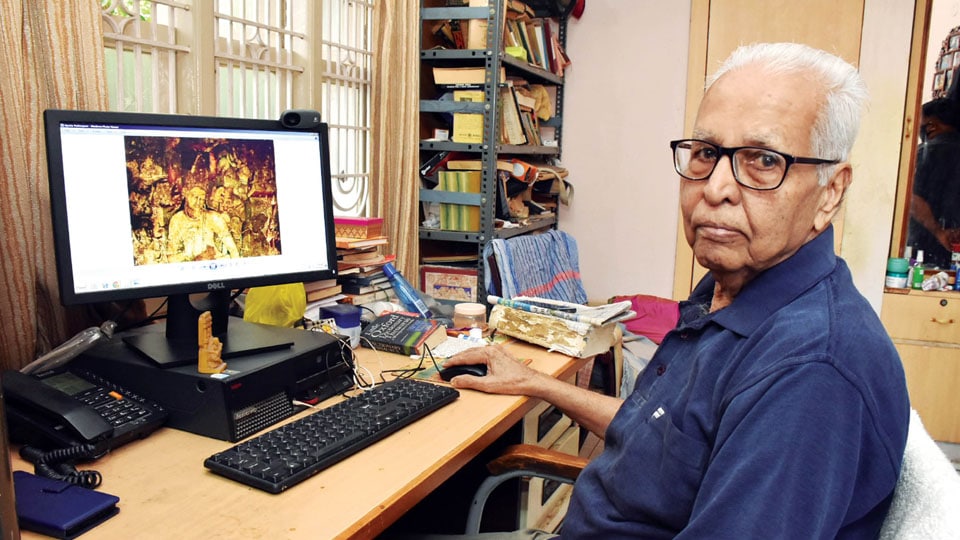




Recent Comments